Our Verdict
The Aorus Tachyon is primarily built for a rather narrow extreme OC use case, but don’t underestimate it as a well featured and refined board if you’re chasing maximum efficiency too.
For
- Mega VRM and cooling
- Endless tweaking options
- Well featured for an OC focused board
Against
- There are better options if you’re not a serial tweaker
- Inevitably expensive
PC Gamer's got your back
Overclocking focused motherboards have made a proper comeback. This time around all the major manufacturers have Z590 boards specifically designed for serious overclocking. There’s the Asus Maximus Apex, ASRock OC Formula, MSI Unify-X, EVGA Dark, and the beauty we have here in the lab today, the Gigabyte Z590 Aorus Tachyon.
Most high-end motherboards have a gaming focus, but underneath their RGB snarling beast and flaming warrior facades, they don’t really offer a hell of lot that’s truly gaming specific or offer functions that a ‘normal’ motherboard can’t do.
Overclocking motherboards are different though. Just look at the Aorus Tachyon. The dual memory slot design, all those buttons and switches, a monstrous VRM and a unique layout are all aimed at making life easier for overclockers. Then there’s a comprehensive BIOS with extensive tweaking options. It’s clear that this isn’t a regular board with a fancy sticker slapped on.
Although an Intel Core i9 11900K isn't a good example of an overclockable CPU unless you’re using sub zero cooling, we are still happy to see motherboards built from the ground up for serious and sustained overclocks.
There's a lot to cover when examining the layout. The CPU socket area is free from traditional capacitors, making it insulation friendly, and there are only two memory slots despite it being an E-ATX board.
The idea behind having only two instead of four is to minimise trace complexity and bring the slots closer to the CPU. This helps reduce latency and usually allows a little more performance headroom compared to a four-slot design. The primary PCIe slot is not the topmost one, it’s the one below it. This is another choice to aid overclockers who use LN2 cool a GPU by allowing extra room for pots and insulation.
You'll probably notice a whole load of buttons and switches which are all aimed at making life easier for overclockers too. Otherwise, common things like power, reset and CMOS clear switches are joined by others that allow real time frequency adjustments, specific LN2 modes, profile switching, and a limp mode, among others. You’ll also notice SATA and USB ports in this area. Unique indeed!
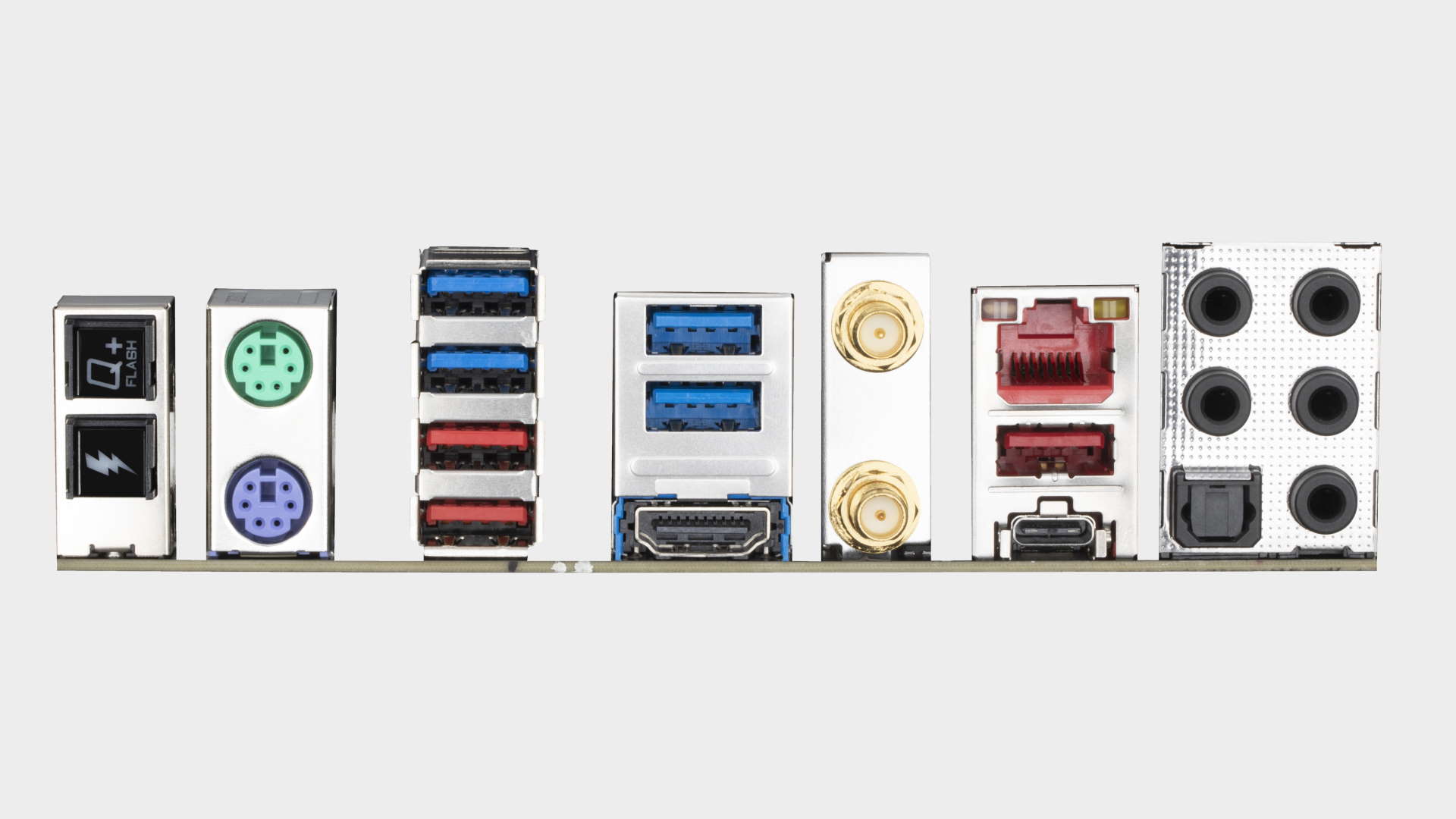
Form factor: E-ATX
Socket: LGA 1200
CPU support: Intel 10th & 11th Gen processors
Storage: 3x M.2; 8x SATA
USB: 1x USB 3.2 Gen 2x2, up to 5x USB 3.2 Gen 2, up to 6x USB 3.1 Gen 1, up to 4x USB 2.0
Video outputs: 1x HDMI 2.0
Network: Intel Wi-Fi 6E; Intel I225V 2.5G LAN
Audio: Realtek ALC1220-VB 7.1 Channel HD Audio
Price: $530
The Tachyon packs in a direct 12-phase VRM with 100A power stages. We’re pleased to see Gigabyte resist getting sucked into promoting 9999 phases as the marketing be all and end all. With all that current on tap, we feel sorry for those tiny LGA pins...
This board can smash out sustained AVX loads to the limit of LN2 cooling, so it will laugh in our faces when presented with a humble 360mm AIO. You’ll run into cooling limitations well before the board moves beyond a trot.
All this talk of overclocking might imply that the board is a one trick pony but that’s definitely not the case. LN2 overclockers make up just a fraction of a fraction of the market, and a regular user looking to push their 11th Gen K-series CPU with regular cooling won’t be lacking anything in terms of connectivity. You get eight SATA ports and three M.2 slots, USB 3.2 Gen 2 (including a Type-C 2x2 port), Intel 2.5G LAN and Wi-Fi 6E, all of which you’d expect on a high-end board. Perhaps 5G or 10G LAN would be nice given the cheaper Aorus Master comes with 10G.
_____________________________________________________
Check out more 500-series motherboard reviews:
- MSI MPG Z590 Gaming Carbon Wi-Fi
- Asus TUF Gaming Z590 Plus Wi-Fi
- ASRock Z590 PG Velocita
- MSI MPG B560i Gaming Edge
________________________________________________________
The rear I/O isn't missing much either. Overclockers often make use of ancient PS/2 keyboards and mice which allows a user to disable USB entirely. Hey, every tenth of a second is important for those SuperPi 32m competitions! You get the aforementioned 2.5G LAN port, Wi-Fi 6E antenna ports and a Type-C USB 3.2 Gen 2x2 port which is joined by three Gen 2 ports and four Gen 1 ports. Gigabyte includes a single HDMI port for use with the onboard Xe graphics, and at the far left are Q-Flash and OC ignition buttons.
Gigabyte's BIOS, like most manufacturers' doesn’t really change a lot between generations. All of the features you’d expect are present, but where the Tachyon really goes above and beyond is its memory options. This is something we're keen to dig further into given the latest Intel generation's focus on memory and whether those Gear 1/Gear 2 differences can help or hinder for PC gaming.
Suffice to say that no matter what kind of memory you're running, be it Samsung, Micron, or Hynix based, you’ll be able to tweak all kinds of esoteric memory settings that we think even engineers would struggle to fully explain.
Gaming performance
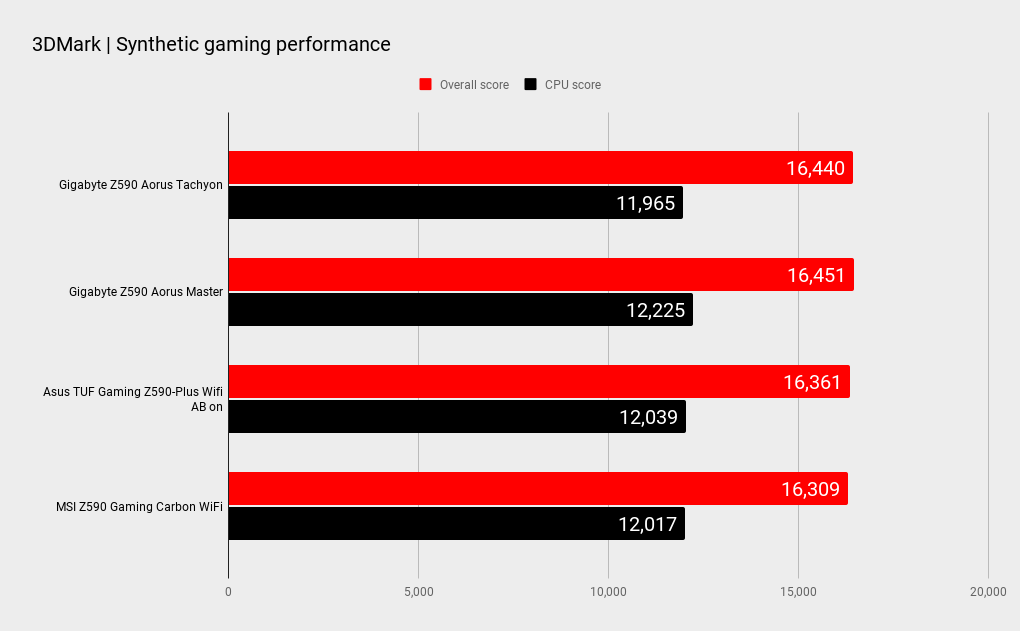
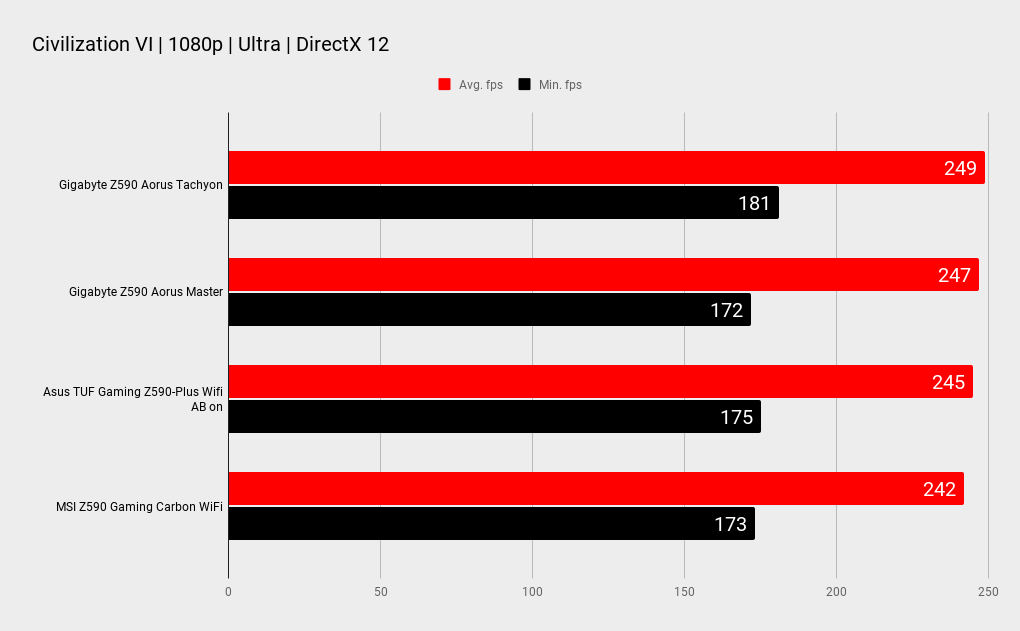
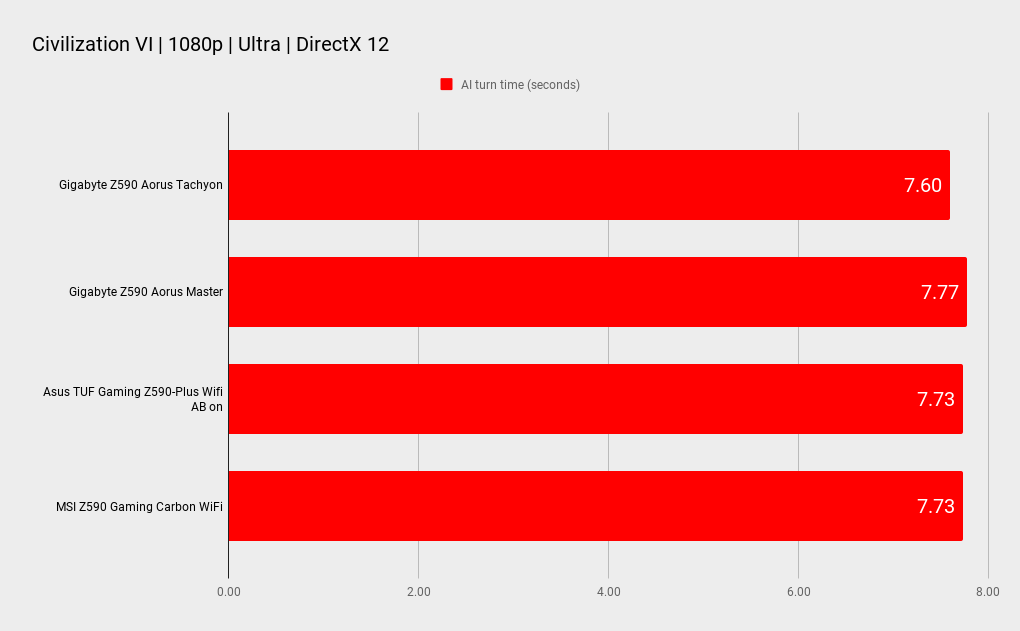
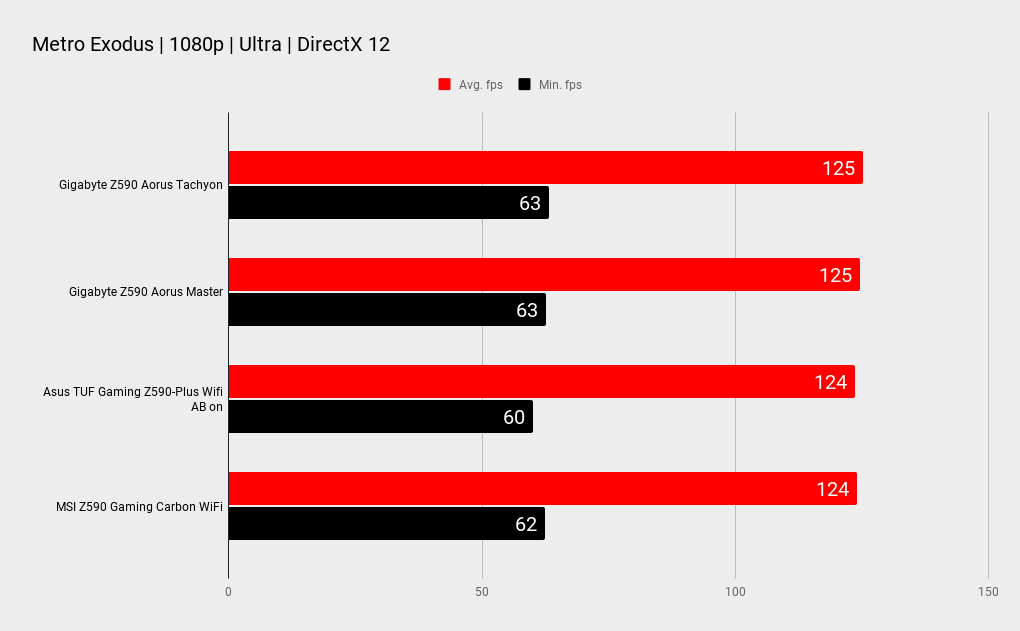
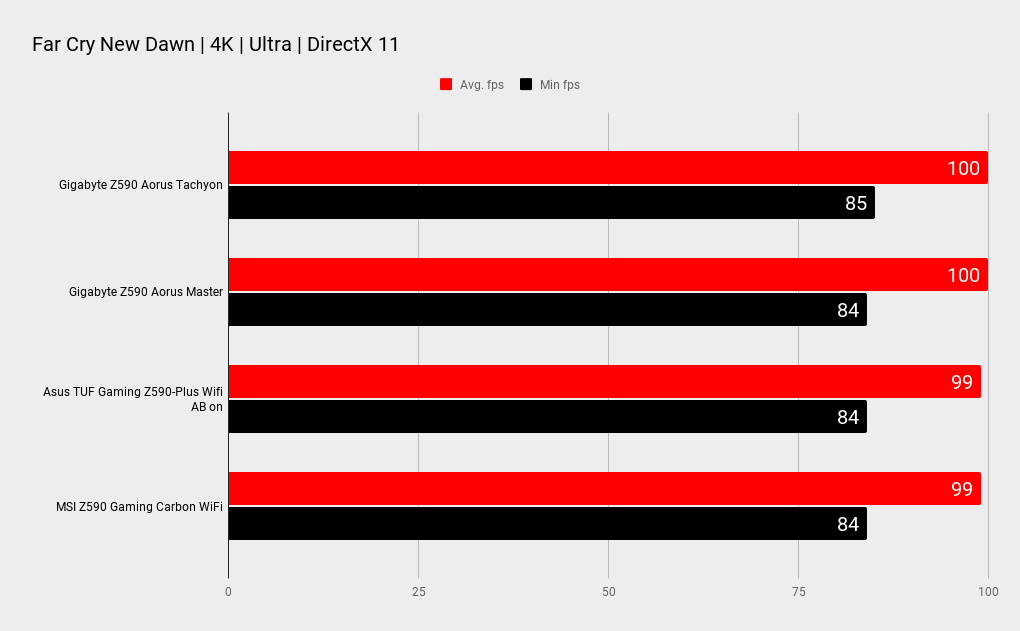
System performance
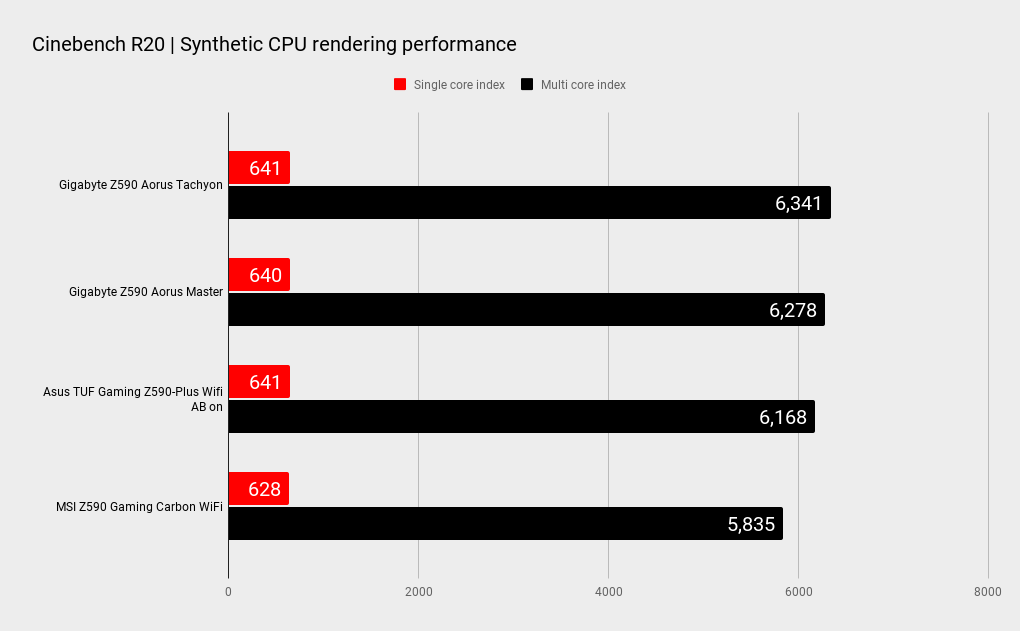

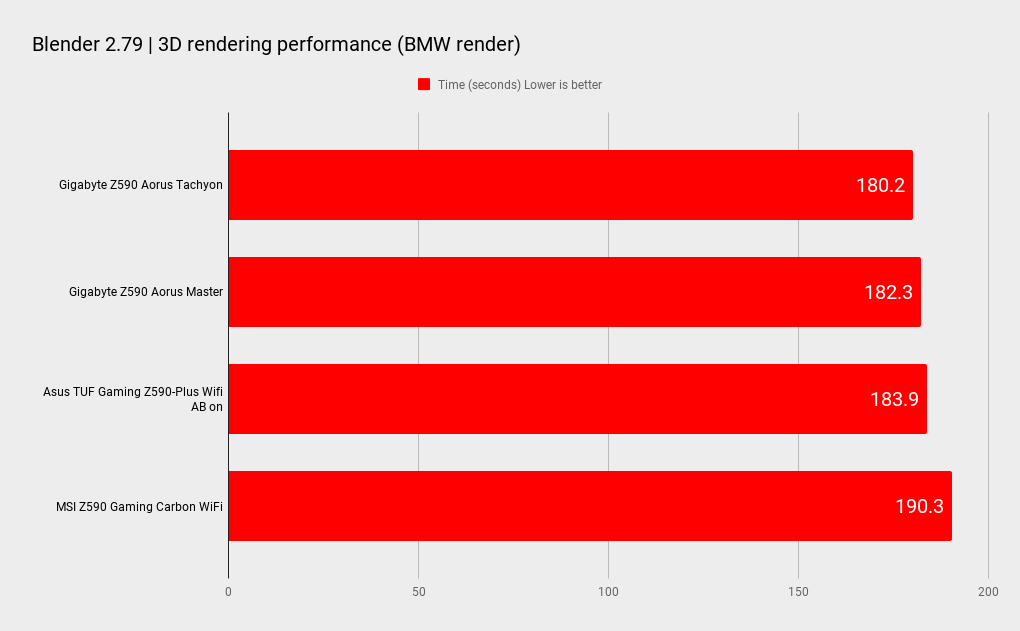
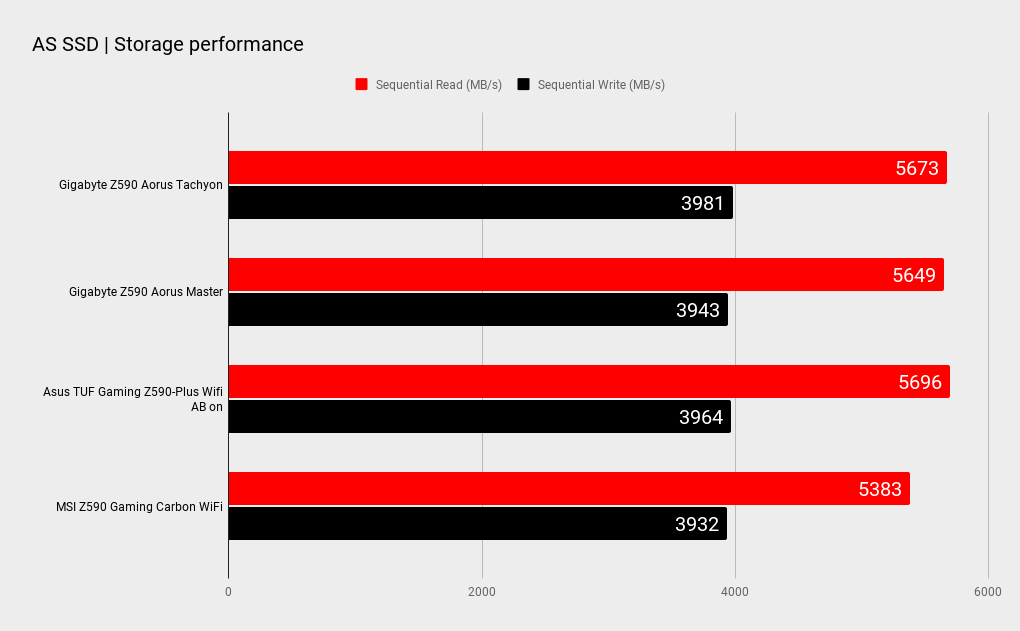
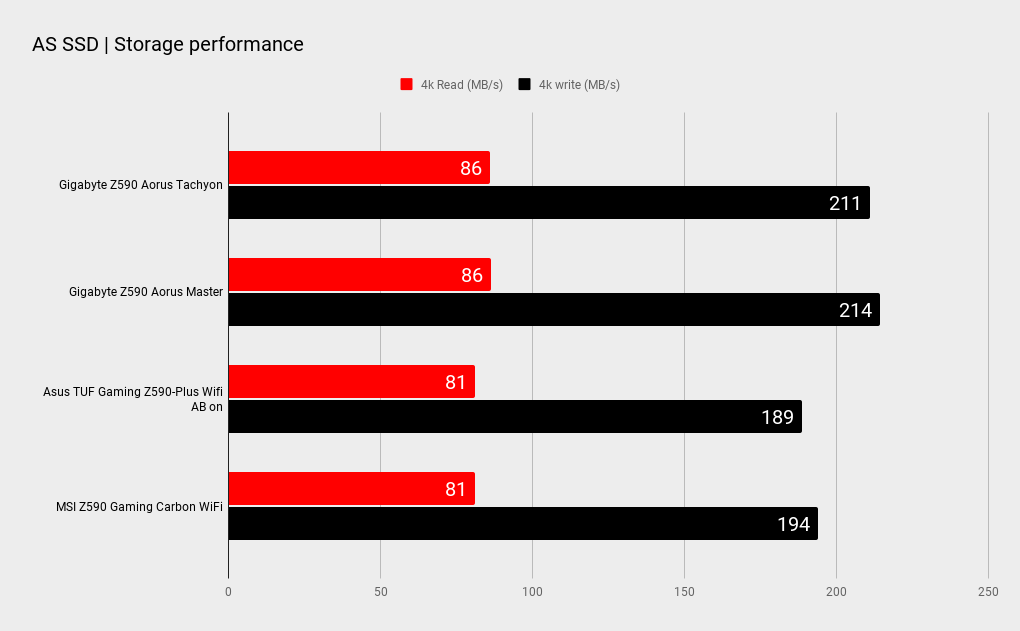
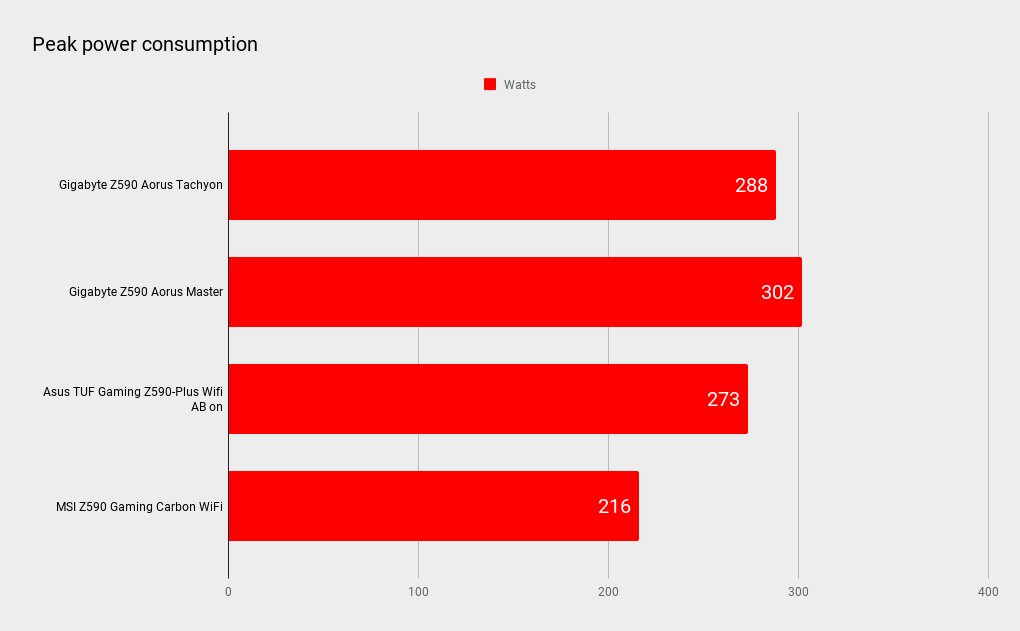
CPU: Intel Core i9-11900K
GPU: MSI RTX 3080 Gaming X Trio
RAM: 16GB Teamgroup T-Force DDR4-3600 14-15-15-35
Storage: 2TB Adata S70, 500GB Samsung 980 Pro
Case: Thermaltake Core P8
Cooling: NZXT X73 360mm AIO
Power Supply: Corsair AX1000
Operating system: Windows 10 Pro x64 20H2
We tested the board with our Core i9 11900K and Adaptive Boost enabled, cooled by a 360mm AIO. The Tachyon proved to be very competitive in all benchmarks, and did so with notable power efficiency.
It remains the case that Rocket Lake is shockingly cooling limited and, as expected, this board won’t magically find hundreds of extra MHz unless you move to ever more intricate cooling. Our CPU is able to hit 5.2GHz but when pushed with a heavy load, temps rapidly shoot above 90°C, even at maximum pump and fan speed.
Memory overclocking is particularly impressive, though, with our Samsung B-Die kit able to hit 4,800MHz with tight timings, albeit at voltages that you wouldn’t want to use 24/7. Our initial experiences are very positive.
I love it when you don’t have to 'fight' the board, especially at settings that are generally flaky, or may not even post on other boards. It’s a good indication of BIOS maturity. We know overclockers are always offering feedback which is obviously being acted upon by Gigabyte’s BIOS team.
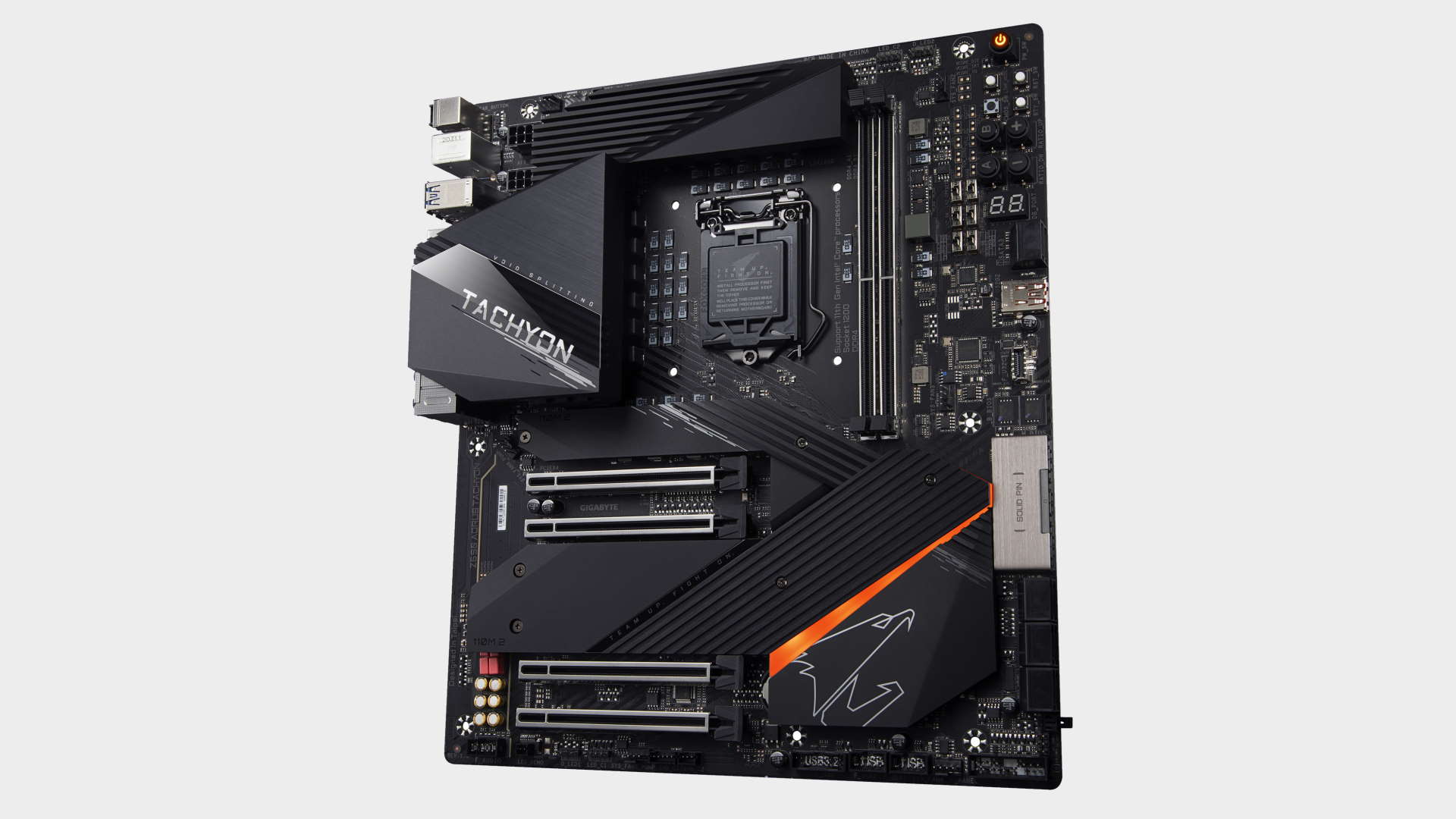
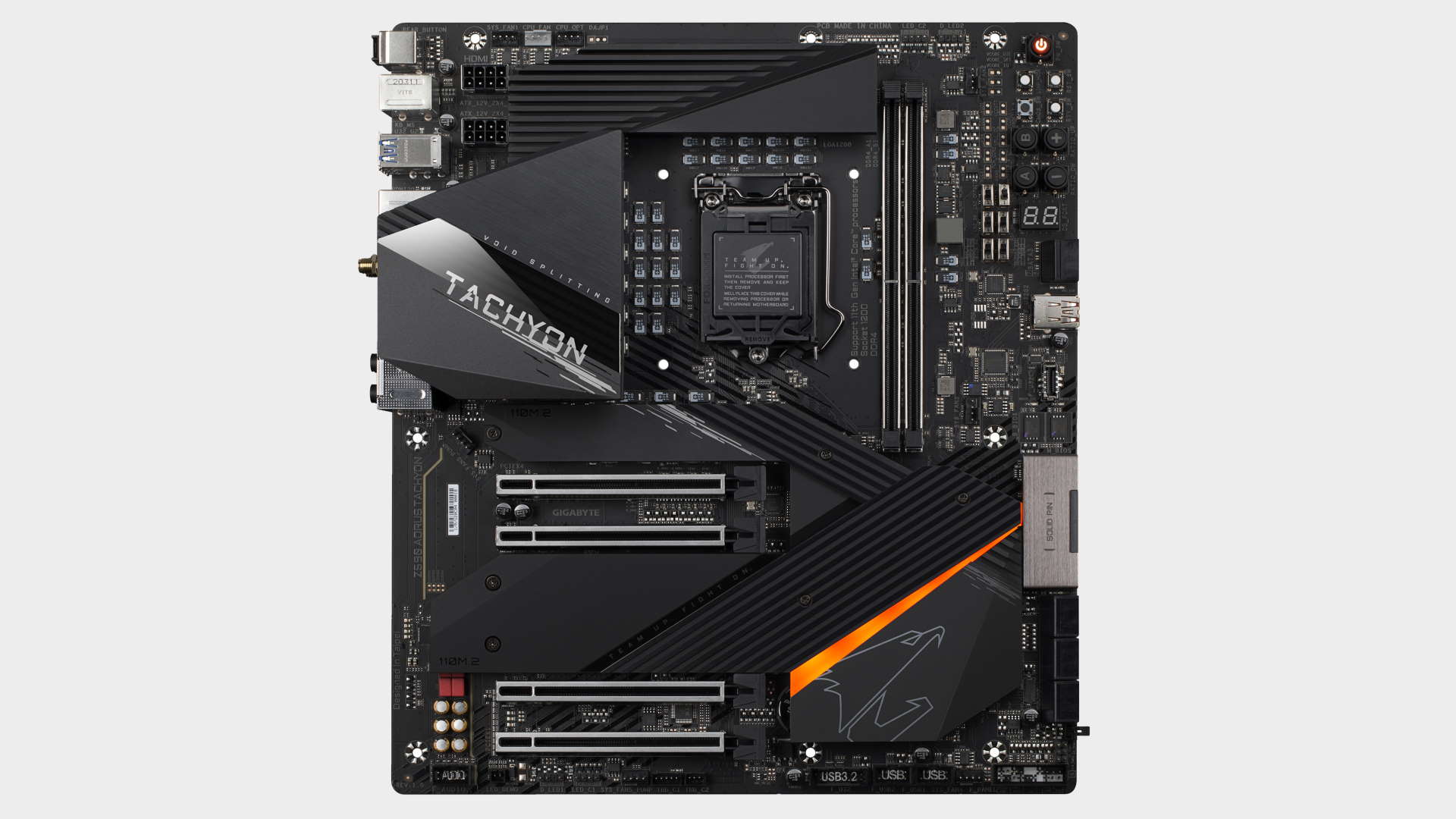
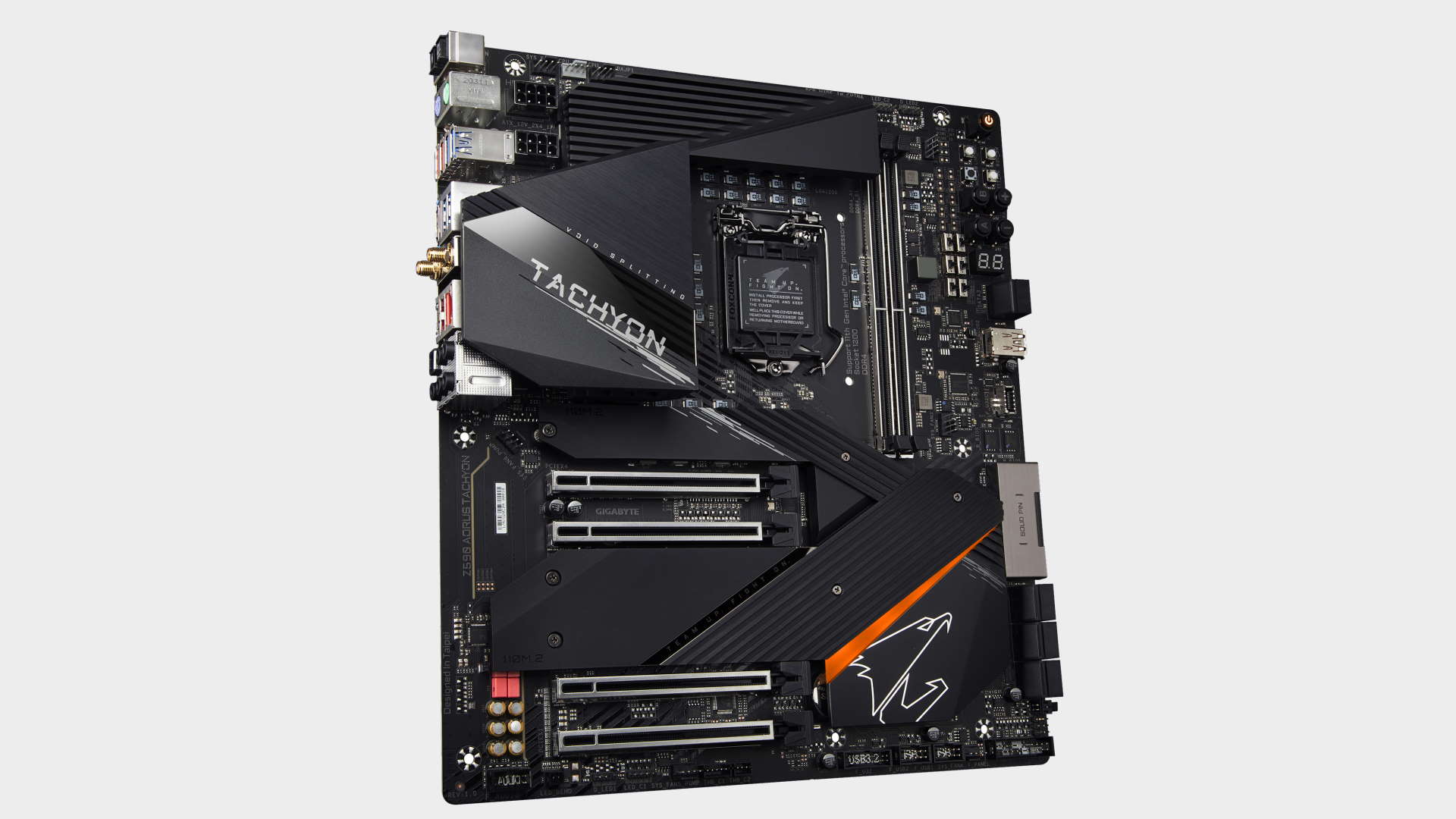
But the real question is whether the Tachyon is a board you should buy over the likes of an Aorus Master? The answer is probably no, not unless you really do consider yourself a serious overclocker.
The Gigabyte Z590 Aorus Tachyon won’t magically add frequency to your CPU and memory. What it will do is help you to extract the maximum efficiency out of your system, no matter what cooling you’re using. An enthusiast who loves to tweak, spending time reducing latency and tweaking sub timings, or a gamer dedicated to finding a few extra FPS will enjoy peace of mind knowing you’ve got a board that’s specifically designed to take whatever punishment you throw at it.
The Aorus Tachyon is definitely not for everyone, but apart from all those OC features, it really is a capable and refined board, albeit a pricey one. You probably don't need us to tell you whether that's an issue for you or not, you'll already know.
The Aorus Tachyon is primarily built for a rather narrow extreme OC use case, but don’t underestimate it as a well featured and refined board if you’re chasing maximum efficiency too.

Chris' gaming experiences go back to the mid-nineties when he conned his parents into buying an 'educational PC' that was conveniently overpowered to play Doom and Tie Fighter. He developed a love of extreme overclocking that destroyed his savings despite the cheaper hardware on offer via his job at a PC store. To afford more LN2 he began moonlighting as a reviewer for VR-Zone before jumping the fence to work for MSI Australia. Since then, he's gone back to journalism, enthusiastically reviewing the latest and greatest components for PC & Tech Authority, PC Powerplay and currently Australian Personal Computer magazine and PC Gamer. Chris still puts far too many hours into Borderlands 3, always striving to become a more efficient killer.

